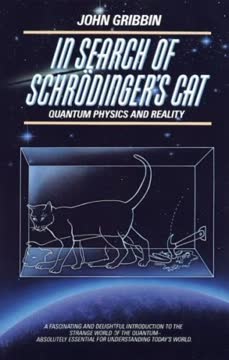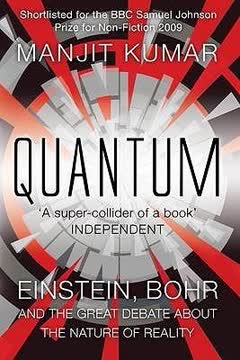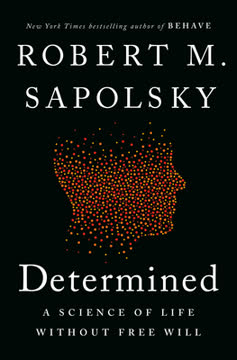Key Takeaways
1. Feynman's unique approach revolutionized quantum electrodynamics
Reality must take precedence over public relations, for nature cannot be fooled.
Innovative problem-solving: Feynman's approach to quantum electrodynamics (QED) was characterized by his ability to think outside the box and develop new mathematical techniques. He tackled the problem of infinities in QED calculations by introducing a method called renormalization, which allowed physicists to make sense of seemingly nonsensical results.
Practical applications: Feynman's work on QED led to incredibly accurate predictions of physical phenomena, making it one of the most successful theories in physics. His methods allowed for precise calculations of quantities such as the magnetic moment of the electron, which agreed with experimental results to an unprecedented degree of accuracy.
Key aspects of Feynman's QED work:
- Developed a new mathematical formalism
- Introduced the concept of renormalization
- Achieved remarkable agreement with experimental data
- Laid the groundwork for future developments in particle physics
2. The "sum over paths" formulation reframed quantum mechanics
There is pleasure in recognizing old things from a new viewpoint.
A new perspective: Feynman's "sum over paths" or path integral formulation of quantum mechanics provided a radically different way of understanding quantum phenomena. Instead of focusing on the evolution of wave functions, Feynman's approach considered all possible paths a particle could take between two points.
Mathematical elegance: This formulation not only offered a new conceptual understanding of quantum mechanics but also provided a powerful mathematical tool for calculations. It allowed physicists to tackle problems that were difficult or impossible to solve using traditional methods.
Advantages of the path integral formulation:
- Intuitive visualization of quantum processes
- Simplified calculations for complex systems
- Natural incorporation of symmetry principles
- Facilitated the development of quantum field theory
3. Feynman diagrams: A powerful tool for visualizing particle interactions
The real entertainment gimmick is the excitement, drama, and mystery of the subject matter.
Visual representation: Feynman diagrams revolutionized the way physicists thought about and calculated particle interactions. These simple yet powerful drawings allowed complex mathematical processes to be represented visually, making them easier to understand and manipulate.
Calculation aid: Beyond their visual appeal, Feynman diagrams became an indispensable tool for performing calculations in particle physics. They provided a systematic way to organize and compute the probabilities of various interaction processes, greatly simplifying what would otherwise be extremely complex mathematical operations.
Impact of Feynman diagrams:
- Simplified complex calculations in particle physics
- Provided an intuitive way to understand particle interactions
- Became a universal language for physicists
- Facilitated the development of new theories and predictions
4. Contributions to condensed matter physics and superfluidity
The game I play is a very interesting one. It's imagination, in a tight straitjacket.
Diverse applications: Feynman's work wasn't limited to particle physics. He made significant contributions to condensed matter physics, particularly in understanding superfluidity in liquid helium. His approach to this problem demonstrated his ability to apply quantum mechanical principles to macroscopic systems.
Innovative techniques: To tackle the superfluidity problem, Feynman developed new mathematical techniques and physical insights. He introduced the concept of "rotons" to explain the behavior of superfluid helium and used his path integral formulation to provide a quantum mechanical description of the phenomenon.
Key aspects of Feynman's work on superfluidity:
- Introduced the concept of rotons
- Applied path integral methods to macroscopic systems
- Provided a microscopic explanation for macroscopic behavior
- Demonstrated the universality of quantum mechanical principles
5. Pioneering work on quantum computing and nanotechnology
There's Plenty of Room at the Bottom.
Visionary ideas: In his famous 1959 lecture, Feynman laid the groundwork for the fields of nanotechnology and quantum computing. He envisioned the possibility of manipulating individual atoms and proposed the idea of quantum mechanical computers long before the technology existed to realize these concepts.
Lasting impact: Feynman's ideas in these areas continue to influence research and technological development today. His work on quantum computing, in particular, has become increasingly relevant as researchers strive to build practical quantum computers.
Feynman's contributions to emerging technologies:
- Proposed the concept of atomic-scale manipulation
- Envisioned quantum mechanical computers
- Inspired the development of nanotechnology
- Laid theoretical foundations for quantum information science
6. The parton model: A new way to understand particle physics
The fact that a theory gets rid of infinities is to me not a sufficient reason to believe its uniqueness.
Simplifying complexity: Feynman's parton model provided a way to understand the complex structure of hadrons (particles made of quarks) in terms of simpler constituent particles. This model helped explain experimental results from deep inelastic scattering experiments and laid the groundwork for the development of quantum chromodynamics (QCD).
Bridge to modern theory: While initially conceived as a phenomenological model, the parton model eventually led to the acceptance of quarks as fundamental particles. Feynman's work in this area demonstrated his ability to extract meaningful physical insights from complex experimental data.
Key aspects of the parton model:
- Explained deep inelastic scattering experiments
- Provided a simple picture of hadron structure
- Facilitated the development of QCD
- Demonstrated the power of phenomenological approaches in physics
7. Feynman's legacy: Bridging theory and experiment in physics
The way I think of what we're doing is, we're exploring—we're trying to find out as much as we can about the world.
Practical focus: Throughout his career, Feynman emphasized the importance of connecting theoretical ideas to experimental results. He was skeptical of purely mathematical approaches and always sought to understand the physical implications of theories.
Lasting influence: Feynman's approach to physics, which combined mathematical rigor with physical intuition and a focus on experimental verification, continues to influence the field today. His work demonstrated the power of bridging the gap between theory and experiment.
Characteristics of Feynman's approach:
- Emphasis on physical understanding over mathematical formalism
- Skepticism of untested theories
- Commitment to experimental verification
- Ability to extract physical insights from complex mathematics
8. A lifelong pursuit of understanding through unconventional methods
I was always worried about the physics. If the idea looked lousy, I said it looked lousy. If it looked good, I said it looked good.
Unique perspective: Feynman's approach to physics was characterized by his willingness to question established ideas and develop new ways of thinking about problems. He often approached problems from unconventional angles, leading to novel insights and solutions.
Continuous learning: Throughout his life, Feynman maintained a curiosity about the world and a desire to understand things from first principles. This attitude led him to make contributions in diverse areas of physics and beyond, including biology and computing.
Elements of Feynman's unconventional approach:
- Willingness to question established ideas
- Emphasis on understanding from first principles
- Exploration of diverse fields and problems
- Use of intuition and visualization to guide mathematical work
9. The importance of integrity and skepticism in scientific inquiry
The first principle is that you must not fool yourself—and you are the easiest person to fool.
Scientific integrity: Feynman emphasized the importance of honesty and integrity in scientific research. He was known for his skepticism of untested theories and his insistence on rigorous experimental verification.
Critical thinking: Feynman's approach to science involved constantly questioning assumptions and being willing to admit when he was wrong. He encouraged students and colleagues to think critically and not to be swayed by authority or conventional wisdom.
Key aspects of Feynman's scientific philosophy:
- Emphasis on honesty and integrity in research
- Skepticism of untested theories
- Willingness to admit mistakes and change views
- Encouragement of critical thinking and questioning assumptions
Last updated:
FAQ
What's Quantum Man: Richard Feynman's Life in Science about?
- Biographical Focus: The book is a biography of Richard Feynman, a prominent physicist known for his work in quantum mechanics and particle physics. It explores his life, scientific achievements, and personal experiences.
- Scientific Contributions: It details Feynman's groundbreaking work in quantum electrodynamics (QED) and his development of the path integral formulation, which revolutionized quantum mechanics.
- Personal Journey: The narrative delves into Feynman's personal life, including his relationships and struggles, providing a comprehensive portrait of a complex individual.
Why should I read Quantum Man: Richard Feynman's Life in Science?
- Inspiration from Feynman: Readers can gain inspiration from Feynman's curiosity and passion for science, as well as his unconventional approach to problem-solving.
- Understanding Quantum Physics: The book provides accessible explanations of complex scientific concepts, making it valuable for those interested in physics.
- Cultural Impact: Feynman's influence extends beyond physics; his personality and philosophy have made a lasting impact on science communication and education.
What are the key takeaways of Quantum Man: Richard Feynman's Life in Science?
- Legacy of Curiosity: Feynman's insatiable curiosity and desire to understand the world are central themes, emphasizing the importance of exploration.
- Innovative Thinking: The book highlights the importance of thinking outside conventional frameworks, as demonstrated by Feynman's path integral formulation.
- Human Element in Science: Feynman's personal struggles and triumphs highlight the human side of scientific endeavor, reminding readers of the emotional aspects of science.
What are the best quotes from Quantum Man: Richard Feynman's Life in Science and what do they mean?
- "Reality must take precedence...": This quote underscores Feynman's belief in scientific integrity and the pursuit of truth, regardless of public perception.
- "The Universe is not only queerer...": Reflects Feynman's acknowledgment of the complexities and mysteries of the universe, suggesting our understanding is limited.
- "What I am trying to do...": Feynman expresses his goal of making complex scientific ideas understandable, emphasizing clear communication in science.
How did Feynman contribute to quantum electrodynamics (QED)?
- Innovative Techniques: Feynman introduced Feynman diagrams, simplifying complex calculations by representing particle interactions graphically.
- Renormalization: He played a crucial role in the renormalization process, making QED a mathematically consistent theory.
- Experimental Validation: His work led to predictions confirmed by experiments, solidifying QED as one of the most accurate theories in physics.
What is the path integral formulation mentioned in Quantum Man: Richard Feynman's Life in Science?
- Concept Overview: The path integral formulation calculates probabilities in quantum mechanics by considering all possible paths a particle can take.
- Mathematical Basis: Each path contributes to the overall probability amplitude, weighted by a factor related to the action of the path.
- Applications in Physics: Feynman's formulation is fundamental in quantum field theory and has applications in various areas of physics.
What role did Feynman play in the development of quantum computing?
- Pioneering Ideas: Feynman proposed that quantum systems could perform calculations more efficiently than classical computers, laying the foundation for quantum computing.
- Quantum Bits (Qubits): He introduced the idea of qubits, which can exist in multiple states simultaneously, allowing for parallel processing.
- Legacy in Modern Technology: His early work has inspired ongoing research, with quantum computing poised to transform various industries.
How did Feynman approach the concept of gravity in Quantum Man: Richard Feynman's Life in Science?
- Quantum Gravity Exploration: Feynman sought to understand gravity through quantum mechanics, aiming to unify it with quantum field theories.
- Path-Integral Formulation: He applied path-integral methods to gravity, suggesting summing over all possible geometries to understand interactions.
- Impact on Future Research: His work influenced subsequent theories, including string theory and quantum cosmology.
How did Feynman contribute to the understanding of superfluidity?
- Explained Quantum Behavior: Feynman proposed that superfluidity in helium could be understood through Bose-Einstein condensation.
- Path-Integral Methods: He used path-integral methods to analyze superfluid helium, bridging microscopic quantum behavior and macroscopic effects.
- Influence on Condensed Matter Physics: His work laid the groundwork for future research in condensed matter physics.
How did Feynman's teaching style influence his students?
- Engaging and Dynamic: Feynman emphasized understanding concepts through intuition and creativity rather than rote memorization.
- Encouraging Exploration: He encouraged students to explore problems independently, fostering a deeper understanding.
- Limited Formal Mentorship: Despite his brilliance, his unconventional methods sometimes made it difficult for students to keep up.
What challenges did Feynman face in his personal life as described in Quantum Man: Richard Feynman's Life in Science?
- Loss and Grief: Feynman experienced profound personal loss, including the death of his first wife, affecting him deeply.
- Struggles with Identity: He grappled with his identity as a scientist and person, feeling pressure from fame and expectations.
- Navigating Relationships: His relationships were often tumultuous, reflecting his struggles with vulnerability and commitment.
How did Feynman's character influence his scientific work?
- Curiosity-Driven Exploration: Feynman's insatiable curiosity drove him to explore a wide range of scientific topics.
- Playful Approach to Science: His playful demeanor made complex concepts more accessible, fostering collaboration and innovation.
- Integrity and Honesty: Feynman's commitment to intellectual honesty guided his scientific endeavors, valuing truth over accolades.
Review Summary
Quantum Man receives mostly positive reviews, with readers praising Krauss's detailed exploration of Feynman's scientific contributions and their historical context. Many appreciate the balance between Feynman's personal life and his work in physics. However, some find the scientific explanations challenging, especially for non-specialists. Readers value the insights into Feynman's unique approach to problem-solving and his impact on various fields of physics. The book is recommended for those interested in the history of science and Feynman's life, though some suggest other biographies for a more comprehensive view of his personality.
Similar Books









Download PDF
Download EPUB
.epub digital book format is ideal for reading ebooks on phones, tablets, and e-readers.





